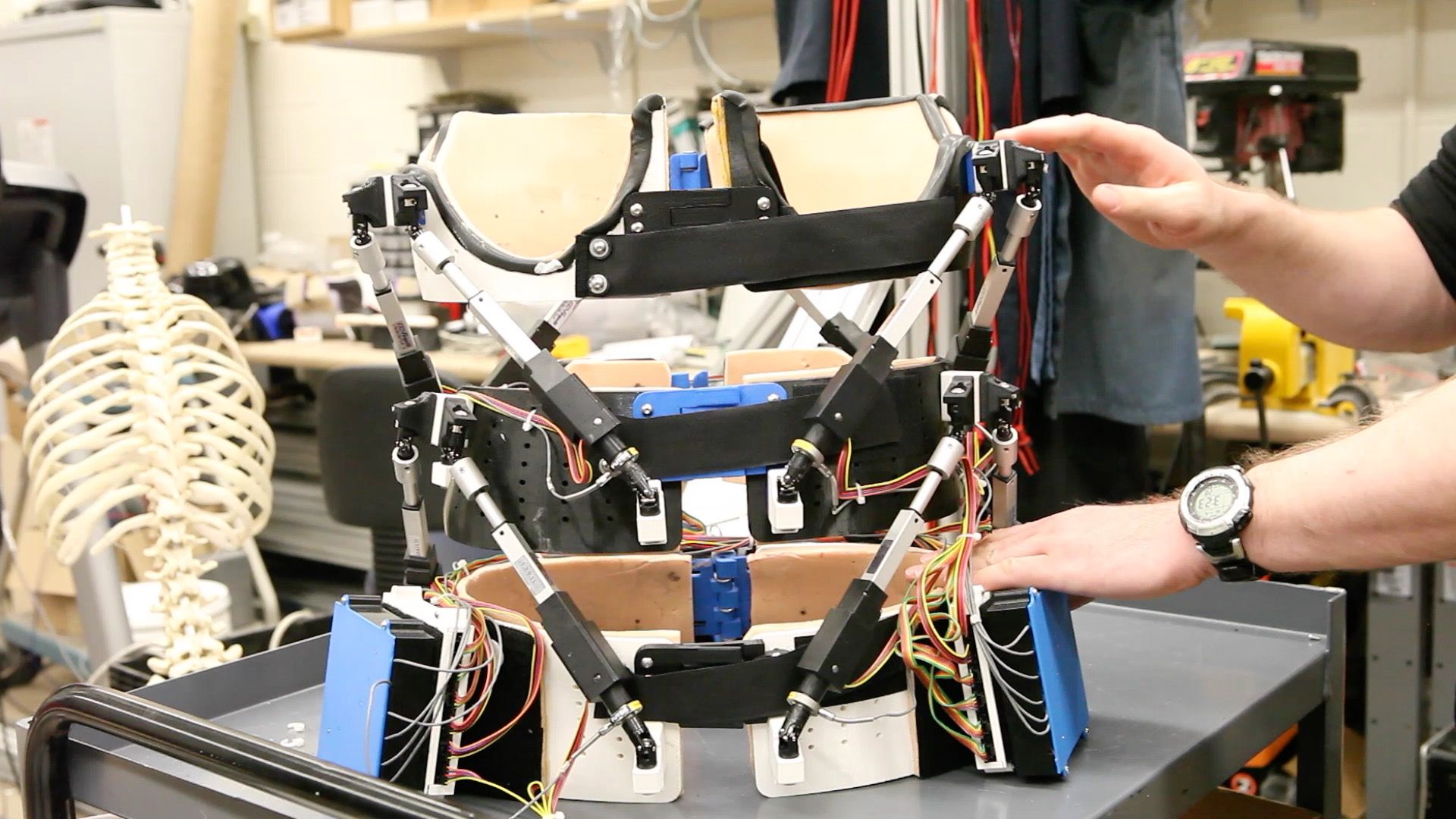An Exoskeleton Spine Brace for Scoliosis
A dynamic exoskeleton that gathers data from the human spine could provide clues for more effective treatment of scoliosis

For the unlucky 3 percent of children diagnosed with scoliosis—a condition that causes an abnormal curve in the spine—treatment has traditionally meant spending years inside a rigid, plastic corrective brace.
But researchers at Columbia’s School of Engineering are hoping to replace this low-tech cast with a smart exoskeleton. Their prototype bends and moves with the patient’s body, while still exerting targeted force on the affected areas of the spine. This could make it possible for a patient to get the benefits of bracing, even as she bends, twists and participates in a variety of activities.
The brace comes with another big advantage: data. Without an x-ray, traditional braces are effectively black boxes; there’s really no way to know what’s going on underneath. The dynamic brace, on the other hand, is equipped with sensors that measure the amount of force required to align the body. This data might provide clues about how the patient’s spine is responding to a particular treatment, giving physicians insight about what to do next. Watch the exoskeleton brace in action in this video.
Cheneu Brace Image Credit: Weiss HR - Weiss HR. Scoliosis 2007, 2:19. PMID: 18163917.doi:10.1186/1748-7161-2-19